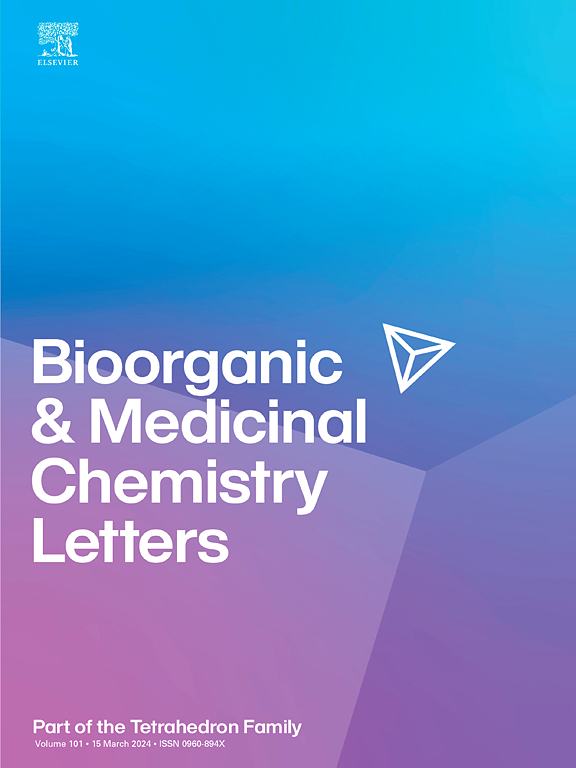蒽醌-三氮烯衍生物作为新型DNA损伤抗肿瘤药物的发现
IF 2.2
4区 医学
Q3 CHEMISTRY, MEDICINAL
引用次数: 0
摘要
本研究设计了40个蒽醌-三氮烯衍生物,通过分子对接和分子动力学模拟,筛选出了AT-9和AT-10与DNA和拓扑异构酶II的强结合亲和力,作为潜在的抗肿瘤候选药物。抗增殖实验显示,与参比米托蒽醌相比,AT-9和AT-10对A549和HeLa细胞株的抑制作用明显更强。通过光谱和凝胶电泳证实了AT-9和AT-10与DNA的结合模式。代谢途径研究表明,AT-9和AT-10容易受到水分子的亲核攻击,导致氮释放并降解为蒽醌-酰胺化合物。因此,协同抗肿瘤机制源于蒽醌环的DNA嵌入和三氮烯部分介导的烷基化作用。此外,ADME分析显示AT-9和AT-10具有良好的药物相似性和药代动力学特性,表明进一步开发的潜力很大。本文章由计算机程序翻译,如有差异,请以英文原文为准。

Discovery of anthraquinone-triazene derivatives as novel antitumor agents causing DNA damage
In this study, 40 anthraquinone-triazene derivatives were designed, and AT-9 and AT-10 were screened out as potential antitumor candidates based on their strong binding affinities to DNA and topoisomerase II using molecular docking and molecular dynamics simulations. Antiproliferative assays revealed that AT-9 and AT-10 exhibited significantly stronger inhibitory effects on A549 and HeLa cell lines compared to the reference mitoxantrone. The binding modes of AT-9 and AT-10 with DNA were confirmed by spectra and gel electrophoresis. Metabolic pathway investigations showed that AT-9 and AT-10 were susceptible to nucleophilic attack by water molecules, leading to the release of nitrogen and degradation into an anthraquinone-amide compound. Thus, the synergistic antitumor mechanism arises from the DNA intercalation of the anthraquinone ring and the alkylating effect mediated by the triazene moiety. Furthermore, ADME analysis revealed that AT-9 and AT-10 possessed favorable drug-likeness and pharmacokinetic properties, indicating strong potential for further development.
求助全文
通过发布文献求助,成功后即可免费获取论文全文。
去求助
来源期刊
CiteScore
5.70
自引率
3.70%
发文量
463
审稿时长
27 days
期刊介绍:
Bioorganic & Medicinal Chemistry Letters presents preliminary experimental or theoretical research results of outstanding significance and timeliness on all aspects of science at the interface of chemistry and biology and on major advances in drug design and development. The journal publishes articles in the form of communications reporting experimental or theoretical results of special interest, and strives to provide maximum dissemination to a large, international audience.

 求助内容:
求助内容: 应助结果提醒方式:
应助结果提醒方式:


